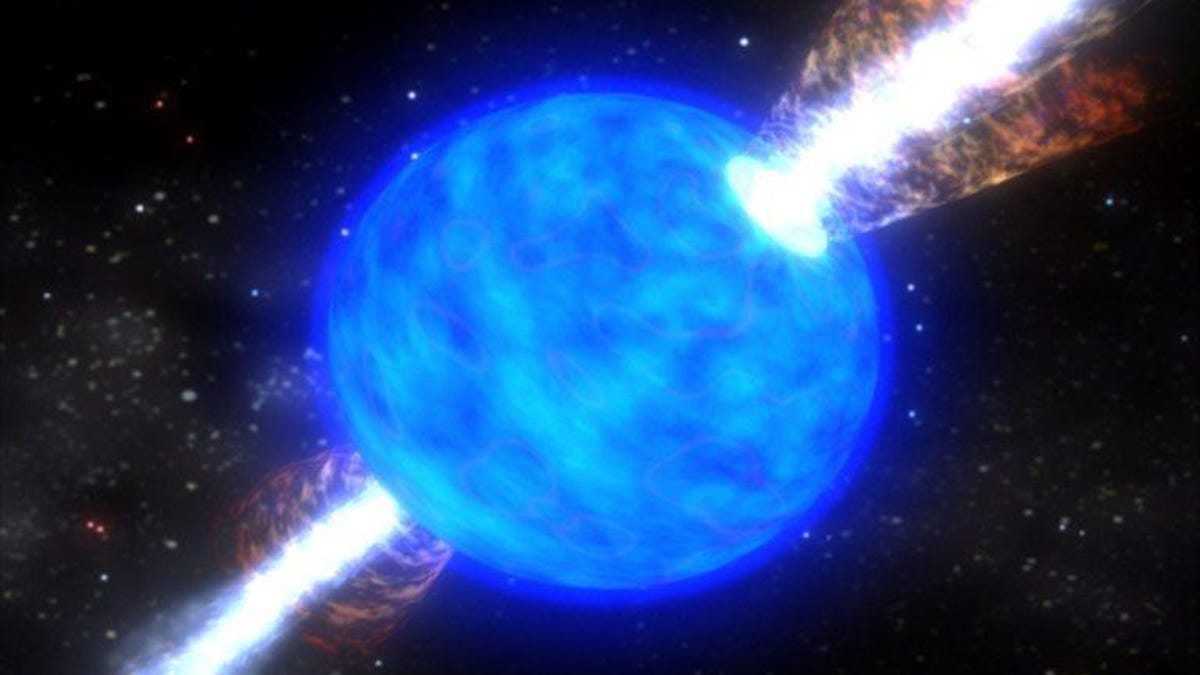Rare star explosion birthed gold, researchers say
Thought the fancy elements came from a collision of neutron stars? That's so 2017.

Artist's impression of a collapsar showering the universe with shiny things.
It's been thought that valuable heavy elements like gold and platinum were created by massive cosmic collisions involving neutron stars or black holes. But a new finding suggests the gold on your ring finger or in your electronics might have really come from a rare supernova explosion that also gives birth to a black hole in the process.
The epic blast is called a "collapsar" and occurs when a very old and massive star collapses in on itself and implodes, leaving behind a brand-new black hole.
Physicist Daniel Siegel from the University of Guelph in Toronto worked with colleagues from Columbia University to model how collapsars eject heavy elements into the universe.
"Eighty percent of these heavy elements we see should come from collapsars," Siegel said in a release. "Collapsars are fairly rare in occurrences of supernovae, even more rare than neutron star mergers -- but the amount of material that they eject into space is much higher than that from neutron star mergers."
A paper explaining the result was published Thursday in the journal Nature.
Next the team would like to see its theoretical model backed by observations in the actual universe, perhaps by the upcoming James Webb Space Telescope, which should be able to detect signs of collapsar-forged heavy elements in a far-off galaxy.

